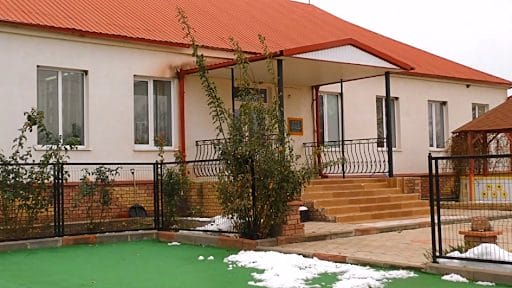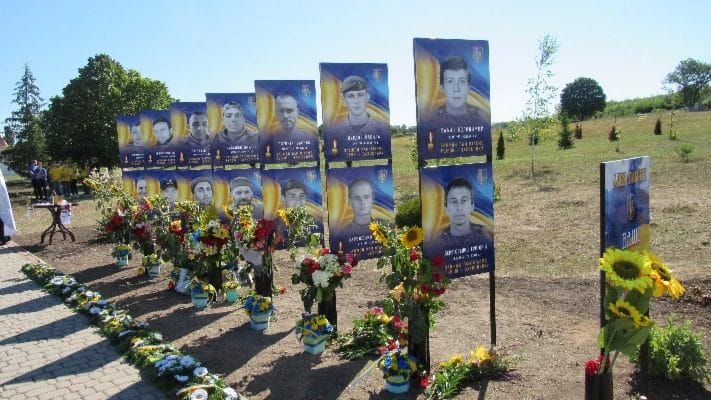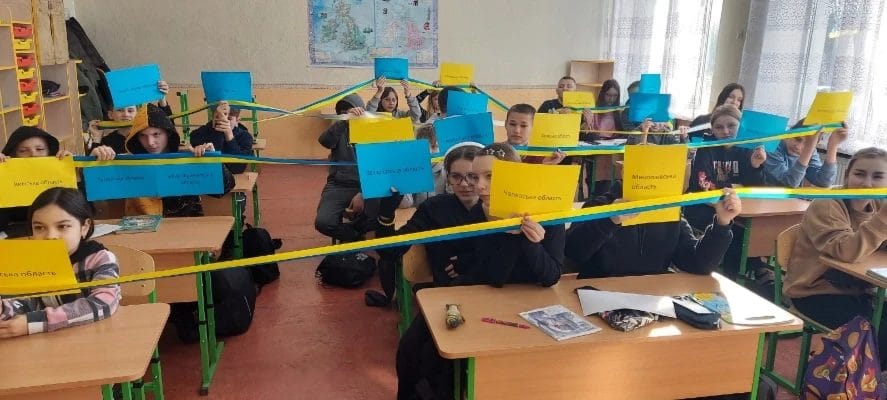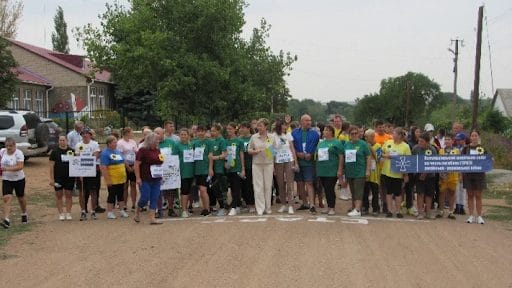This website uses cookies so that we can provide you with the best user experience possible. Cookie information is stored in your browser and performs functions such as recognising you when you return to our website and helping our team to understand which sections of the website you find most interesting and useful.
Novomariivka Territorial Council

The community is situated in the steppe zone on the southern outskirts of the Prydniprovia Plateau in the north-western part of Mykolaiv Oblast, within the boundaries of the Middle Pobuzhzhia region. The territorial community comprises 26 settlements.
As of 01.01.2025, the population totals 3,762 people.
Economically active population aged 18-59 years accounts for nearly 60% of the total population.
History
The territory of the Novomariivka community has deep historical roots. Its lands were inhabited as early as the Scythian and Cossack eras, as evidenced by ancient burial mounds found near local villages. Throughout the 18th and 19th centuries, Ukrainian families from central regions migrated here, developing the fertile lands of Pobuzhzhia through farming, crafts, and livestock breeding.
During the liberation struggles and events of the 20th century, the community’s residents actively participated in the national movement, supporting Ukrainian forces. In Novomariivka and its villages, monuments to World War II soldiers, memorial plaques for fallen Heroes of Ukraine, and memory chapels are preserved, where patriotic events and commemorations of fallen defenders are held annually.
The community takes pride in its distinguished natives. In the village of Kamiano-Kostuvate, Panas Saksahanskyi, a luminary of Ukrainian theatre, director, and actor, was born, alongside Mykola Sadovskyi (Tobilevych), one of the founders of Ukrainian theatre, and Maria Sadovska (Tobilevych), a renowned Ukrainian singer and dramatic actress.

Also, in the village of Mostove, Mykola Benardos, a Ukrainian inventor of Greek origin and creator of arc welding, was born, making a significant contribution to global science and technology.
Today, the Novomariivka community diligently preserves its historical heritage, revives traditions, and holds Cossack festivals, celebrations, and patriotic events that unite generations of residents.
Economy and Welfare
The Novomariivka community is predominantly agricultural, shaped by its natural conditions and rich chornozem soils. The local economy is driven by farming households and agricultural enterprises that cultivate grain, industrial, and fodder crops, engage in livestock breeding, and process agricultural products.
Among the largest enterprises in the community are “Kuibysheva,” “Dobrobut,” “Viktoriia,” “Liudmylivskyi Elevator,” “Yug-Service,” “Yus-Agro,” “Start,” “Agro-Yug,” “Peremoha,” “Konvaliia,” and “Rosa-13.” These enterprises focus on growing grain and oilseed crops, developing pig and sheep farming, and producing sunflower oil and bakery products sold within the community.
The community has 37 retail facilities and 4 catering establishments that provide residents with essential goods and services.
Special attention is given to the development of education. The community operates 6 general secondary education institutions: 3 lyceums, 2 gymnasiums, and 1 primary school.

Additionally, 7 preschool education institutions provide comfortable conditions for children’s learning, upbringing, and development. Schools host clubs, sports sections, and creative groups that promote the comprehensive development of youth.
The healthcare sector is represented by one general practice family medicine outpatient clinic and 7 health posts, providing primary medical care to residents.
Cultural life is supported by 5 cultural clubs and 4 libraries, which serve as centres for creativity, leisure, and the preservation of national traditions.
To promote an active lifestyle, the community maintains a stadium, sports halls in schools, sports grounds, and active parks, hosting competitions, sports festivals, and mass events for children and youth.
A notable tourist attraction is the “Lisove” area in the Myroliubivka starosta district, home to the “Lisova Kazka” children’s health camp. Built in 1989 with modern infrastructure for children’s recreation, it now requires renovation and major repairs.
Through the synergy of hardworking people, fertile lands, and educational and cultural opportunities, the community is dynamically developing, creating comfortable conditions for living and self-realization for every resident.
The Community and the War
Since the onset of the full-scale invasion, the Novomariivka community has been in a frontline zone. While it was not directly affected by combat, the community has experienced the war’s consequences.
The local authorities organized cooperation with humanitarian funds to support internally displaced persons and socially vulnerable residents. The community is home to 109 internally displaced persons.
Between 2023 and 2025, the community provided assistance worth 8.5 million UAH to the needs of the Armed Forces of Ukraine.

Several social programs have been approved by council sessions:
- “Turbota” (2024–2026), supporting war veterans, mobilized individuals, and children of fallen heroes;
- The War Veterans Support Program (2025–2027), providing financial aid, medical treatment benefits, free meals for children, and payments to families of prisoners of war.

People of the Community
Since 2019, the Novomariivka community has been led by Tamara Fesko, an experienced manager and leader who previously served as head of the Bratsk District Council for over nine years. Under her leadership, the community actively develops infrastructure, supports educational and social projects, and attracts investments and international aid.
Each starosta district is represented by proactive starostas who advocate for residents’ interests, assist in implementing local initiatives, and carry out community improvement projects.

Development Strategy
The Novomariivka Community Development Strategy, approved until 2027, outlines three main priorities:
- Economic Growth – Supporting agricultural businesses, fostering cooperation, and attracting investors.
- Comfortable Living – Improving settlements, repairing roads, providing lighting, and ensuring access to quality services.
- Educational and Cultural Development – Creating modern educational spaces, promoting healthy lifestyles, and fostering social cohesion.

Sources
- Official community website: novomarivka.org.ua
- Facebook page: facebook.com/nsrotg
